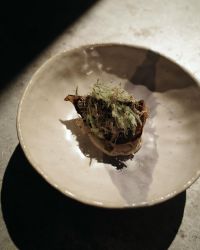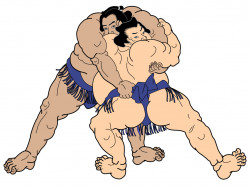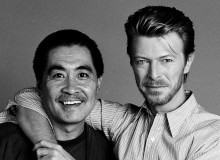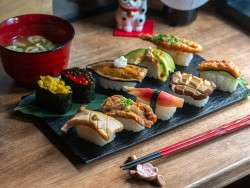
April 27, 2012
After The Return
Forty years after its reversion, Okinawa has become Japan’s democratic powder keg
By Metropolis
Originally published on metropolis.co.jp on April 2012

May 15, 2012 will mark the 40th anniversary of Okinawa’s reversion to Japan after nearly three decades of occupation by the US. For many Okinawans, this day will not be a day of celebration, but a reminder of their ongoing struggle for self-determination. While most of the world believes that the Empire of Japan ended 65 years ago with the country’s new constitution, Okinawa challenges that definition as the one colonized nation still under Japan’s dominion. Since before the dawn of the nation-state era, the island kingdom has found itself at the center of devious power games played by much larger neighbors—and is now at a crossroads. Will it continue to be crushed between the interests of the world’s heaviest contenders—or become the spark that ignites civil democracy in Japan and beyond?
the name game
“Okinawa” is the name of a Japanese prefecture, an archipelago and an island. The prefecture consists of about 160 islands belonging to the geographical formation known as the Ryukyu Arc, which spans from the coast of Kyushu to Taiwan. The prefecture’s islands are often grouped into three archipelagos, the Okinawa Islands, Miyako Islands and Yaeyama Islands. The largest island, Okinawa, is the home of prefectural capital Naha.
Superficially, Okinawa might conjure images of creamy beaches and pastel skies punctuated by clots of unsightly US military bases—an island paradise with a few imperfections. However, the real picture is much more insidious. “Okinawa has been colonized so much that people forget it’s a colony,” observes Ryan Yokota, an Okinawan-American and University of Chicago PhD candidate specializing in post-WWII Okinawan nationalism.
Although it never formally established itself as a nation-state in the European sense, just 140 years ago the Ryukyu Kingdom (as Okinawa was known at the time) met several common nation-defining criteria: it had its own nobility, it was an established member of the Chinese tributary trade system (somewhat analogous to a cross between today’s UN and WTO), and it had its own group of languages, distinct from its neighbors.
However, when nation-state fever swept through Asia at the end of the 19th century, the Kingdom had no discernable nationalist movement, making it an easy target for Empire-frenzied Japan. “There was no movement on the part of the Ryukyu royalty to institute a modern popular sense of nationalism,” comments Yokota. “If you compare Hawaii for example, there was a [nation-state building] movement prior to its occupation by the US,” he adds. “Even in Tibet you saw that.” In contrast, the Ryukyu Kingdom already had an ambiguous tribute-trade relationship with both Japan and China. Under pressure from Japan, King Sho Tai abdicated, and was forced to move to Tokyo, to become a marquis under the kazoku peerage system of the Meiji Empire; with the Ryukyu Kingdom officially becoming Meiji Japan’s Okinawa Prefecture in 1879.
The Ryukyuan court covertly appealed to the Qing court in China, provoking Chinese representatives, such as Viceroy Li Hongzhang, to try to obtain intervention from US President Ulysses S. Grant. A number of proposals were discussed; including some that could have allowed independence for the Ryukyuan state. However, any territorial hopes on the Chinese side, or hopes for independence on the Ryukyuan side, were dashed by the First Sino-Japanese War over Korea—sealing the fate of the Ryukyu nation until World War II.
Japan’s defeat in the Pacific War freed other occupied nations like China and Korea, but Okinawa followed a different trajectory. While the bloody “Typhoon of Steel” (Battle of Okinawa) in 1945 wrested the island chain from the Emperor’s clutches, in many ways the subsequent period of US occupation was even worse. After seeing their land destroyed, Okinawans saw it seized for military bases under US martial law, while the local economy languished. Some villagers were even relocated to Bolivia, as documented by Kozy Amemiya of the Japan Policy Research Institute.
By the 1950s it was clear that Japan’s postwar growth “miracle” had begun, and yet while its quality of life soared, Okinawa was mired in a military economy characterized by “a subculture of bars, prostitutes and racism,” in the words of scholar Chalmers Johnson. As a result many began to see reunification with their former colonial masters as the lesser of two evils. “They thought to themselves, ‘If we go to Japan we can at least get under the peace constitution, regain our civil rights, and we can get rid of the bases,’” remarks Yokota. It wasn’t just the Okinawans who wanted reunification. Japan saw Okinawa’s reversion as symbolic closure to the war; while the US was happy to receive the generous financial incentives on offer.
In order to reunify, however, the Okinawans would need to first reinforce their “Japanese” identity. Accordingly, Japanese replaced the Ryukuan languages in public schools, with entire generations growing up ignorant of the languages. Although a recent movement has tried to revive, or at least preserve, what is left of them, the damage has been done. “By 2030 the last completely fluent speakers will be gone … and by 2080 nobody will be able to understand the Ryukuan languages,” concedes linguistics professor Patrick Heinrich of Saitama’s Dokkyo University.
get involved
Ultimately, reversion ended up being good business for all involved—except the Okinawans. While America returned official title, its bases remained. Today, about 75 percent of all US bases in Japan are located in Okinawa, covering an incredible 11 percent of the islands’ total land area, and 18 percent on Okinawa Island itself. Local landowner opposition was bought off with handsome payments. “Viewed in the context of Japanese politics, this was a small price to pay for leaving mainland Japan relatively free of the American military presence… quarantining it if you will,” explains Professor Mark Selden of Cornell University’s East Asia Program.
Okinawa scholar Gavan McCormack, author of the upcoming Resistant Islands, argues that, “since the ‘reversion’ to Japan of 1972 … Okinawans have consistently struggled to regain their lands and to limit and remove the US military presence.”
But this simmering dissatisfaction did not explode until 1995. The kidnap and rape of a 12-year-old Okinawan girl by three US servicemen fueled massive demonstrations and a modern nationalist movement calling for increased autonomy and reduced American presence. Then Governor Masahide Ota even refused to renew land leases for US bases (he was eventually forced to comply by Japan’s Supreme Court). With a growing number of activist groups, organized protests, and local political dissent, the US attempted to diffuse tensions by relocating Futenma, its most notorious base, to a new location in less populated Henoko. However, opposition continued to amplify.
Rather than accept Futenma’s relocation on the island, residents who had tired of seeing their environment degraded and society desecrated by American building projects pushed for a complete moratorium on any new construction, culminating in a protest of 90,000 Okinawans in April 2010 and sit-ins continuing at Henoko to this day. The dissent has been successful. Despite tremendous pressure from the Clinton, Bush and Obama administrations, as well from a slew of Japanese prime ministers, the US has been unable to move forward with its Henoko plans for the past 15 years.
In 2005, Professor John Lim at the University of the Ryukyus found that roughly a quarter of Okinawans wanted independence (from a sample of 1,000). But how does that play out in practical terms? Says Yokota, “The sentiment is there, the sense of difference is there, but it’s a very difficult thing for any state to become independent.”
Problems are enhanced by modern geopolitical forces. Okinawan independence doesn’t just involve Japan and the US, but also the biggest regional player, China. Within academic and diplomatic circles, and in popular sentiment, there are fears that an independent Okinawa might find itself pulled into the irredentist claims of Beijing. Professor Xu Yong at Peking University, for example, has argued that the illegitimacy of the Japanese annexation of Okinawa bolsters China’s right to the islands.
What’s more, the Prefecture also administers the disputed Senkaku/Diaoyu Islands, site of the 2010 Japanese Coastguard collision with a Chinese fishing trawler—almost guaranteeing future sovereignty disputes with China. Yet, McCormack qualifies any preconception that the Okinawan population might feel threatened by the Chinese juggernaut. “They have a half a millennium of history as part of the pre-modern Chinese ‘tribute system’ world,” he says. For his part, Yokota doesn’t see the possibility of any serious Chinese claim. “From a historical standpoint, it’s as nonsensical as China asserting a claim over Korea,” he says.
While complete independence may not be an option for Okinawa, the growing sense of national identity and an increased will to oppose the heavy hand of the US-Japan alliance give hope for a future where local voices are heard and respected. McCormack believes it could even result in, “the deepening of democracy; its extension from formal electoral democracy to actual, substantial popular sovereignty.”
Yokota notes that Okinawans “know their situation is constrained. They continually try to push for more self-determination and control over decisions that affect their lives [such as base relocation].” Selden acknowledges that Okinawans have made progress. “It is extraordinary, however, that with both US and Japanese governments committed to honoring the agreement to build at Henoko, that it remains thwarted—I would say very likely dead in the water—after 15 years. It is difficult to think of another instance in which a prefecture could sustain such resistance.”
“Citizen sovereignty is a principle of the [Japanese] constitution, but nowhere implements it like Okinawa. The ongoing struggles are of immense importance to the whole of Japan and beyond it, the region and the world,” McCormack concludes.
further reading
- Islands of Discontent: Okinawan Responses to Japanese and American Power (Asian Voices): Laura Hein and Mark Selden, Rowman & Littlefield Publishers, 2003
- Okinawa: Cold War Island: Chalmers Johnson Ed., Japan Policy Research Institute, 1999
- Resistant Islands: Okinawa Confronts Japan and the United States: Gavan McCormack and Satoko Norimatsu, Rowman & Littlefield Publishers, July 2012







